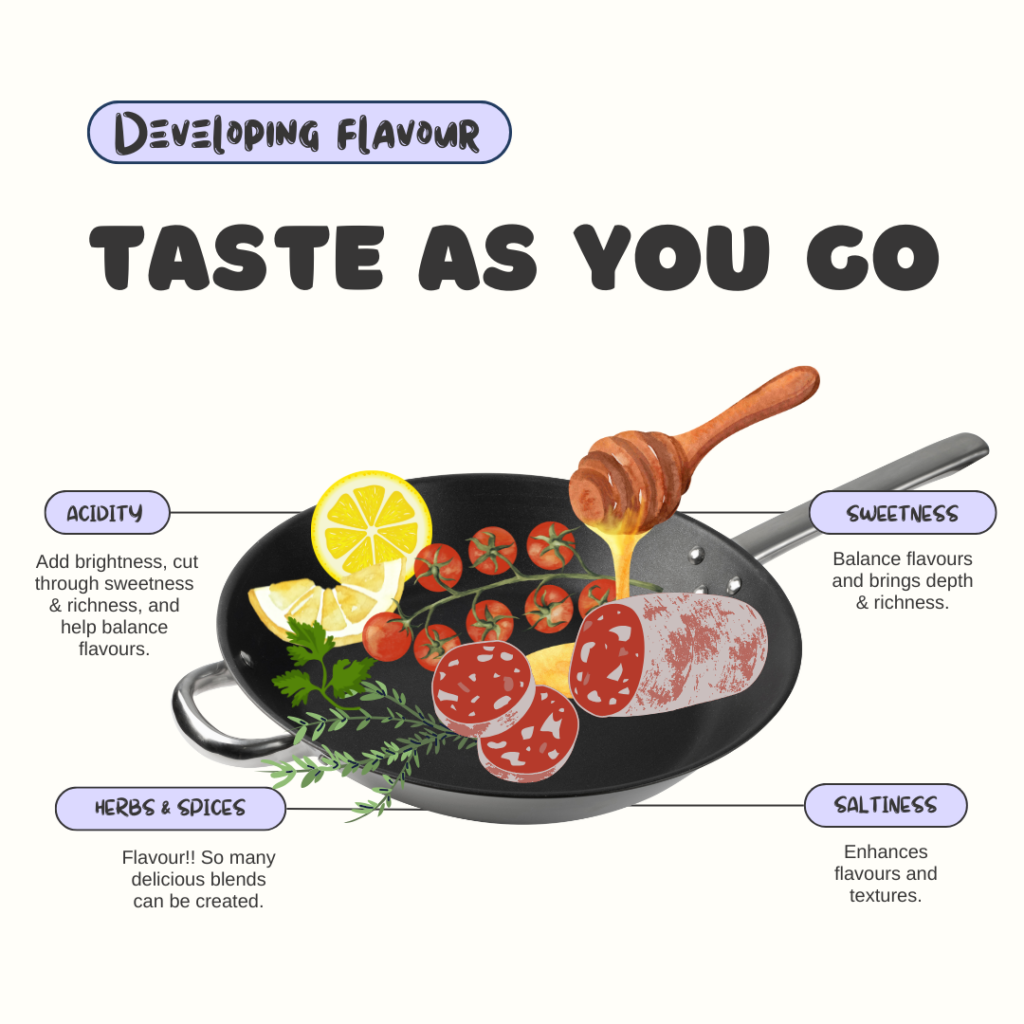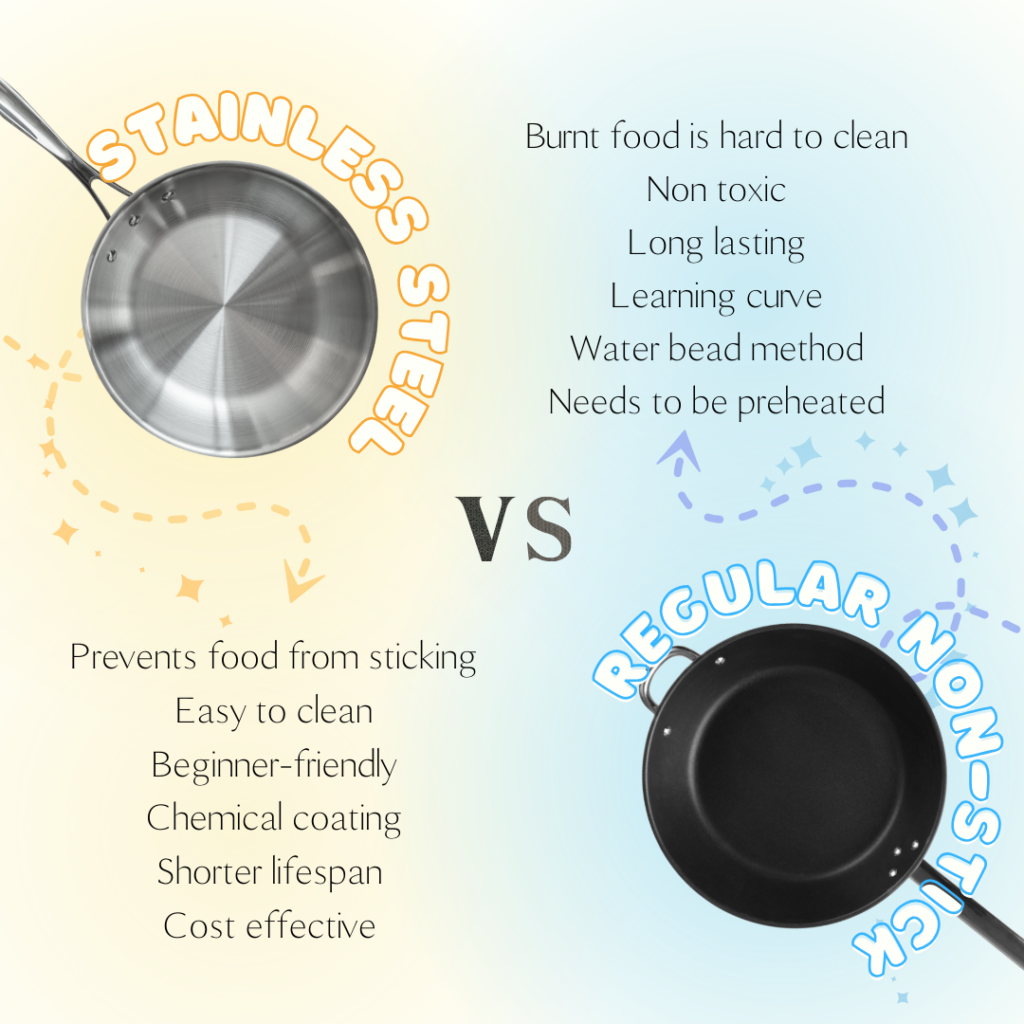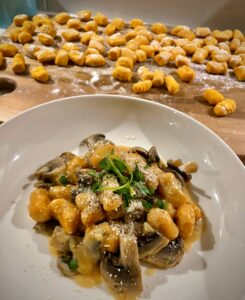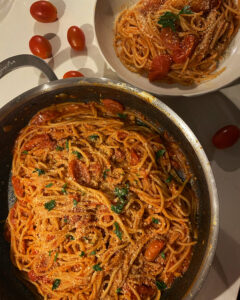Growing up with a professional chef as a mother, I had the privilege of learning the ins and outs of cooking from a very young age. From the right way to chop onions to knowing when to add salt, I picked up so many culinary tips and tricks over the years. It wasn’t until I started cooking for myself and sharing meals with my friends, roommates, and fiancé that I realized how unintuitive some of these techniques were. They would often tell me they’d never heard of these tips before, which made me realize how much culinary knowledge I had taken for granted.
As I spent more time in the kitchen and started experimenting more on my own, I discovered a few of my own little hacks that made cooking easier, more efficient, and a lot more fun. These tips helped me feel more confident and organized in the kitchen, and I want to share them with you!
Whether you’re just starting out or looking to brush up on your skills, these are cooking tips everyone should know. They’re especially perfect for beginners who want to feel more comfortable and build confidence while cooking. I hope these little hacks will make your cooking journey a lot easier and a lot more enjoyable!
Here are 10 cooking tips everyone should know:
1. Developing flavour
- Things like browning your meat or toasting your spices are simple yet powerful ways to elevate the flavour of your dish. When you brown meat, for example, you’re creating a rich, caramelized crust that brings out savoury, deep flavours. Similarly, toasting spices in a hot pan before adding them to your dish helps release their natural oils and brings out their full flavour profile.
2. Mise en place = prep before you cook
- Mise en place meaning “putting in place” or “set up” is a French term and one of the most important habits to adopt in the kitchen. It’s all about preparation before you even touch your stovetop. Take some time to set up your entire cooking space. This means reading through your recipe to make sure you understand each step and gathering all the equipment and tools you’ll need, from pots and pans to measuring spoons. Next, gather and prep all your ingredients—chop, slice, and measure everything out before you start cooking.

This not only helps you stay organized, but it also makes the cooking process smoother and less stressful. It allows you to focus on the cooking itself rather than scrambling to find something you forgot or dealing with a mess as you go. And don’t forget—clean as you go! Keeping your space tidy and organized is key to maintaining focus and enjoying the process.
3. Taste as you go
- It’s so important to salt and taste at every step of the cooking process. Adding salt in stages enhances natural flavours, and helps balance the dish as you go. Sugar also enhances flavours in savoury foods—there’s a reason sweet and savoury pair so well together! You can always add more, but it’s harder to remove.

4. Salt Bae your salt!
- We all remember Salt Bae and his dramatic way of seasoning steak. Believe it or not, his technique isn’t just for show—it’s a method that actually helps with even salt distribution! Sprinkling from a higher distance allows the salt to spread more evenly across your food, ensuring balanced flavor in every bite.
5. Not all oils are the same!
- Olive oil vs avocado oil? Canola or vegetable? Different cooking oils have unique nutritional profiles and are suited for different cooking methods. Healthier oils like olive and avocado oil are great choices—avocado oil is perfect for high-heat cooking because it has a high smoke point, while olive oil is better for medium heat. Sesame oil is another healthy option, but it’s best used as a finishing oil to add a rich, nutty flavor to dishes.
- On the other hand, while canola and vegetable oils can handle high heat, they aren’t as healthy as the others due to their processing methods and nutritional facts.
6. If something feels like it’s missing, try salt or an acidic ingrident
- Salt enhances the natural flavours of your ingredients, while acidic ingredients add brightness, cut through sweetness and richness, and help balance the dish. Common acidic ingredients include lemon juice and vinegars (examples: apple cider, red or white wine vinger, rice)
Note: Please, please, please check that your dish isn’t already salty before adding more salt!
7. Don’t add onions and garlic at the same time
- Onions and garlic cook at different rates, and garlic burns much more easily. It’s better to wait until your onions are almost done before adding the garlic to avoid burning and achieve the perfect balance of flavours
8. Preheat your pans
- Stainless steel cooking tip: I love using stainless steel pans in the kitchen, but I know they can sometimes be tricky for others. It just takes a little patience, but once you get the hang of it, you’ll love cooking with stainless steel! This is how to make a stainless steel pan nonstick: First, preheat your skillet on medium-high heat. You’ll know it’s ready when you can drop a few beads of water on the surface and watch them glide around effortlessly. This is the perfect temperature to start cooking. Once the water beads are gone, add a high-heat oil—like vegetable, avocado oil—and swirl it around the pan to coat it evenly. The oil will create a nonstick layer, and your pan will be ready to use!

9. No non-stick pans on high heat
- I’m not a fan of non-stick pans, but don’t use them on high heat! Non-stick pans are a nightmare for me—they contain chemicals and wear out quickly. If you need a non-stick option, ceramic is a safer choice. However, non-stick (including ceramic) pans should only be used on low or medium heat because they’re not safe at higher temperatures and it breaks down the non-stick coating.
10. Don’t Overcrowd your skillet
- If you’re pan-frying or searing, don’t overcrowd the pan! Too much food in the pan traps in steam and leads to uneven cooking. Also, resist the urge to constantly stir or shake the pan—you want to let your food develop that beautiful browning and caramelization. This will give you more flavour and better texture.





